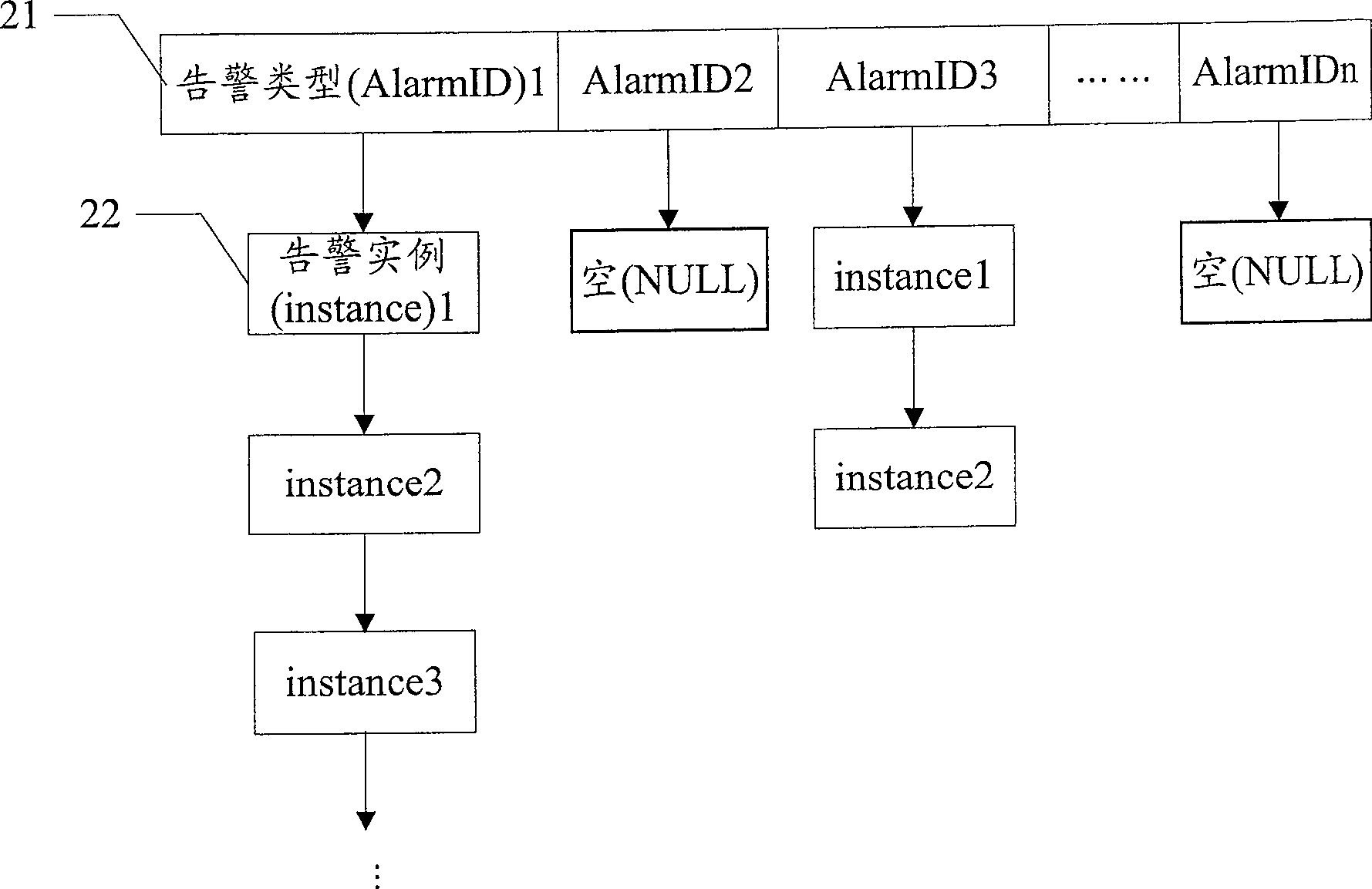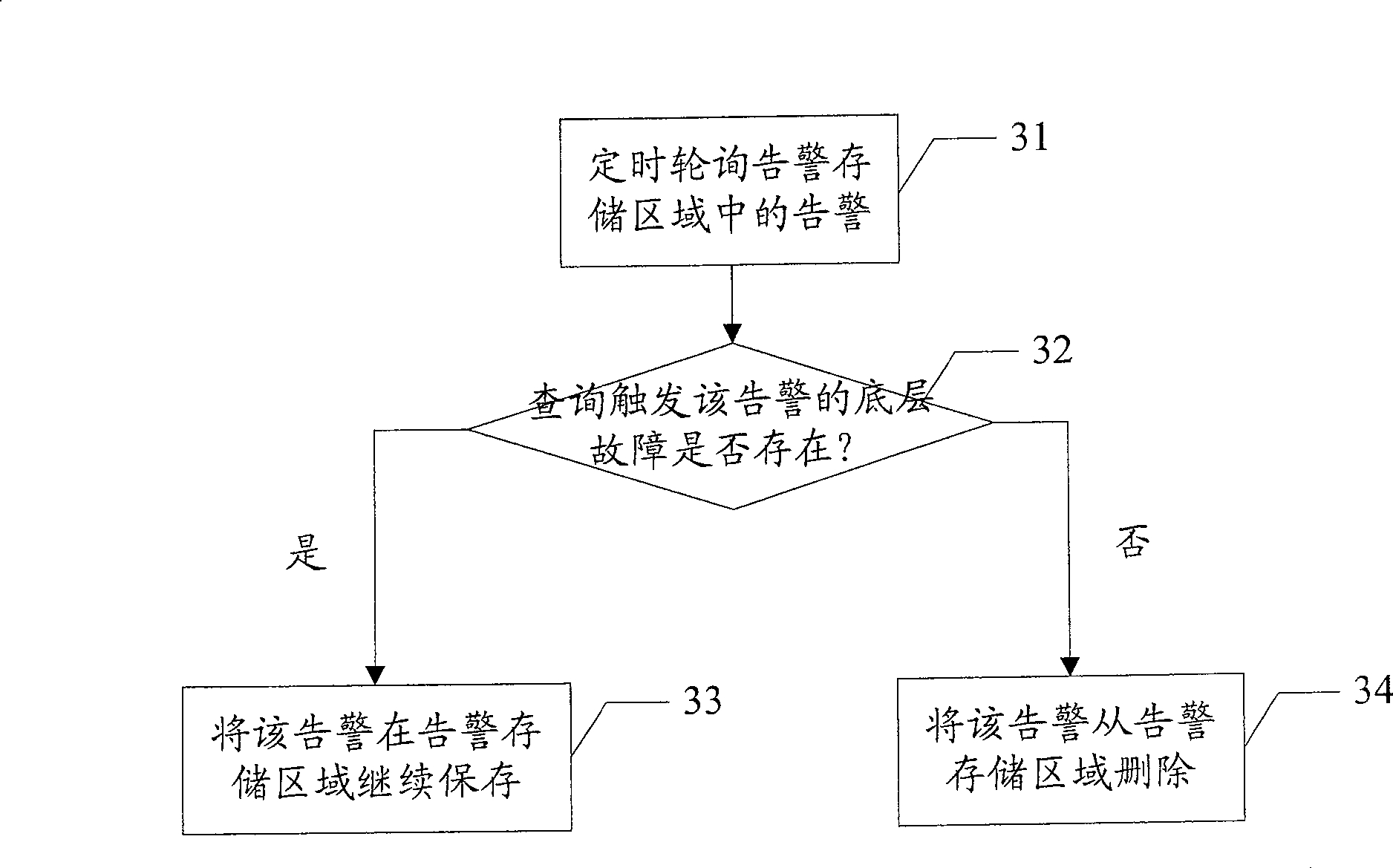Alarm reporting method and alarm device
An alarm device and a technology for deriving alarms, applied in the direction of selection devices, digital transmission systems, electrical components, etc., can solve problems such as not being solved in time, users unable to pay attention to alarms, and unable to detect upper-layer alarm faults, etc., to reduce the burden, Enhance maintainability and serviceability, facilitate rapid location and troubleshooting
- Summary
- Abstract
- Description
- Claims
- Application Information
AI Technical Summary
Problems solved by technology
Method used
Image
Examples
Embodiment 1
[0028] Embodiment one, with reference to figure 1 , the alarm reporting method provided by the embodiment is described with the application in Universal Mobile Telecommunications System (UMTS, Universal Mobile Telecommunications System).
[0029] Step 11: Receive an alarm;
[0030] The service board in the system detects its own hardware and software, and when an alarm is detected, it actively reports to the main control board, so the main control board can receive the alarm generated by the service board or the main control board itself. The received alarm may be a fault alarm or a recovery alarm corresponding to a certain fault alarm.
[0031] Step 12: Determine whether the received alarm is a source alarm or a derived alarm, if it is a source alarm, perform step 13; if it is a derived alarm, perform step 14;
[0032] Each network protocol layer, hardware and software module judges the alarm generated by itself. If the alarm has nothing to do with the underlying fault, the...
Embodiment 2
[0042] Embodiment 2, on the basis of the alarm reporting method provided in Embodiment 1, focuses on how to update and maintain the alarm storage area used to store derived alarms in Embodiment 1, so that the alarm storage area can track the alarm storage area in real time. Stored status of each alarm. refer to image 3 .
[0043] Step 31: Periodically poll the alarms in the alarm storage area;
[0044] Step 32: Query whether the underlying fault that triggered the alarm exists, if yes, execute step 33; if not, execute step 34;
[0045] For example, the main control board will receive alarms from the service board and itself, and judge whether the alarm is a source alarm or a derived alarm. If it is a source alarm, it will be directly reported to the alarm server; if it is a derived alarm, it will be saved. In the alarm storage area. At the same time, the main control board generally saves a state table that records all the service boards and its own bottom state. When a c...
PUM
 Login to View More
Login to View More Abstract
Description
Claims
Application Information
 Login to View More
Login to View More - R&D
- Intellectual Property
- Life Sciences
- Materials
- Tech Scout
- Unparalleled Data Quality
- Higher Quality Content
- 60% Fewer Hallucinations
Browse by: Latest US Patents, China's latest patents, Technical Efficacy Thesaurus, Application Domain, Technology Topic, Popular Technical Reports.
© 2025 PatSnap. All rights reserved.Legal|Privacy policy|Modern Slavery Act Transparency Statement|Sitemap|About US| Contact US: help@patsnap.com



